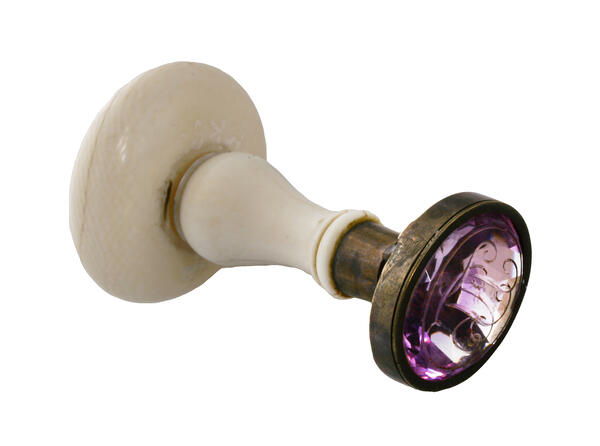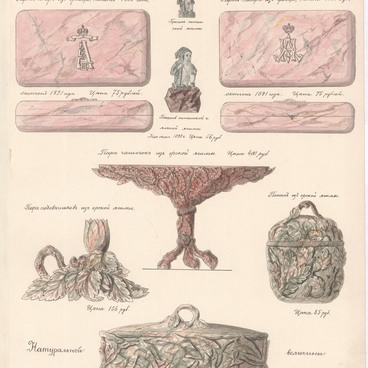Ural craftsmen began to produce stamps with stone matrices at the end of the 18th century. In 1782, the first seal was made: it was entirely cut out of agate and was intended for the Board of public welfare (first public charity organization). Since then, the popularity of such items has been constantly growing.
It is impossible to establish how many stamps were made by the Ural masters in total. But researchers studied large collections in detail and found out that a small number of the same or similar matrices were used for the stamps. They were chosen depending on the social status of the customer. For example, the Caduceus of Hermes who was considered protector of trade was carved for merchant seals. The image of a crossed hammer and pick was associated with the mining industry, whereas the aristocrats preferred a noble crown. On the stamps for personal messages, masters often carved images of a heart or a bird with an envelope in its beak.
The Museum of Stone-Cutting and Jewelry Art History houses more than 100 carved stone seals of the 19th — early 20th century. Most of them are made of rock crystal and its variety — smoky quartz. Among them are items made of different types of jasper, rhodonite, agate, malachite, lazurite. The rarest samples in the collection are carved from amethyst, aquamarine and citrine.
At the beginning of the 19th century, stamps with a round seal-matrix made of precious stones and a handle made of another material (most often wood or ivory) came into fashion. The handles to them were cut with a lathe, the blank for the stamp was attached by a metal part.
This type also includes the seal with the monogram “PB” displayed in the museum. Nobody knows who its previous owner was; it was also not possible to identify the master. The stamp handle was carved from ivory, the matrix was made of amethyst. In the Urals, this stone has been mined since the middle of the 18th century: miner and smelter Dmitry Tumashev was the first to announce that “near the Murzinskaya settlement I found a colored stone in the mountains”. The largest deposit of amethysts was Vatikha: people found there valuable stones with a reddish tinge. It was also found in other places, for example, on the coast of the Aduy River.
It is impossible to establish how many stamps were made by the Ural masters in total. But researchers studied large collections in detail and found out that a small number of the same or similar matrices were used for the stamps. They were chosen depending on the social status of the customer. For example, the Caduceus of Hermes who was considered protector of trade was carved for merchant seals. The image of a crossed hammer and pick was associated with the mining industry, whereas the aristocrats preferred a noble crown. On the stamps for personal messages, masters often carved images of a heart or a bird with an envelope in its beak.
The Museum of Stone-Cutting and Jewelry Art History houses more than 100 carved stone seals of the 19th — early 20th century. Most of them are made of rock crystal and its variety — smoky quartz. Among them are items made of different types of jasper, rhodonite, agate, malachite, lazurite. The rarest samples in the collection are carved from amethyst, aquamarine and citrine.
At the beginning of the 19th century, stamps with a round seal-matrix made of precious stones and a handle made of another material (most often wood or ivory) came into fashion. The handles to them were cut with a lathe, the blank for the stamp was attached by a metal part.
This type also includes the seal with the monogram “PB” displayed in the museum. Nobody knows who its previous owner was; it was also not possible to identify the master. The stamp handle was carved from ivory, the matrix was made of amethyst. In the Urals, this stone has been mined since the middle of the 18th century: miner and smelter Dmitry Tumashev was the first to announce that “near the Murzinskaya settlement I found a colored stone in the mountains”. The largest deposit of amethysts was Vatikha: people found there valuable stones with a reddish tinge. It was also found in other places, for example, on the coast of the Aduy River.



